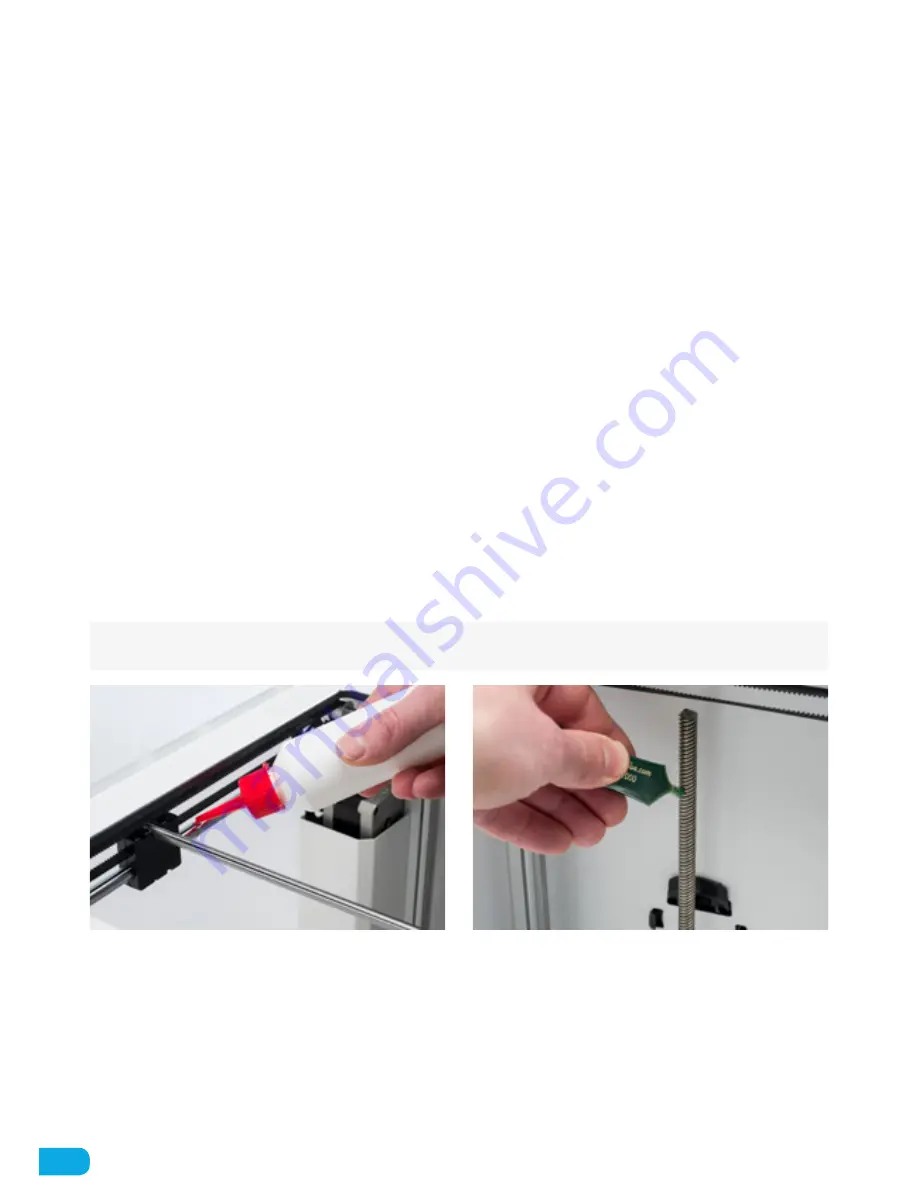
24
THE FEEDER
Using the feeder in the right way and keeping it clean is important for a good extrusion. A few tips are described below.
In order to guide the filament properly through the feeder into the bowden tube and print head, it’s important that the
tension on the feeder is set correctly. If the tension is too high, it means that the knurled wheel of the feeder will dig into
the filament, through which it flattens or - even worse - completely gets stuck. This is what we call grinding.
To prevent grinding of the filament it is therefore important to set the tension on the feeder as loose as possible,
meaning that the white insert clip should be completely at the top. You can achieve this by inserting one of the hex keys
in the hole on top of the feeder and turning it clockwise.
After a lot of printing, the knurled wheel in the material feeder can accumulate small plastic particles. You can clean
this by blowing air on the knurled wheel or using a simple brush. It is also recommended to clean the feeder when you
notice grinding of the filament.
LUBRICATING THE AXES
To maintain your Ultimaker 2 correctly and keep it running smoothly it is recommended to lubricate the axes once in a
while.
When you notice small ridges on the surfaces of your 3D printed objects or feel that the X and Y axes are dry it is
advised to put a single drop of sewing machine oil onto the X and Y axes. This will help your Ultimaker 2 running
smoothly. Sewing machine oil is not included in the Ultimaker 2 package, but we highly recommend to only use this for
lubricating the X and Y axes.
Once every half year the Z trapezoidal leadscrew has to be lubricated with Magnalube. This is the green grease that
was delivered with your Ultimaker 2. Make sure to spread 10 drops of grease over the entire threaded rod. With your
next print the Ultimaker 2 will lubricate the axis itself by moving up and down.
NOTE:
Magnalube should be applied to the Z trapezoidal leadscrew only; make sure to not put it on any of the other
axes.
Summary of Contents for 2 Extended
Page 1: ...Ultimaker2 THE EASY AND RELIABLE 3D PRINTER USER MANUAL R...
Page 2: ...2...
Page 30: ...www ultimaker com R Ultimaker...





















